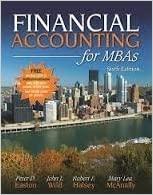Question
Key Terms Match the items A X below to the related definition. Some items may be used once, more than once or not at all.
Key Terms Match the items A X below to the related definition. Some items may be used once, more than once or not at all.
| A | Block sample selection | G | Sample exception rate (SER) | M | Computed upper exception rate (CUER) | S | Haphazard sample selection |
| B | Attribute | H | Nonstatistical sampling | N | Sampling risk | T | Random Error Rate |
| C | Exception rate | I | Sample Distribution | O | Audit sampling | U | Random sample |
| D | Tolerable exception rate (TER) | J | Nonsampling risk | P | Statistical sampling | V | Planned Rate |
| E | Initial sample size | K | Attributes sampling | Q | ARO | W | Representative sample |
| F | Probabilistic sample selection | L | Nonprobabilistic sample selection | R | Estimated population exception rate (EPER) | X | Acceptable risk of overreliance (ARO) |
| The upper limit of the probable population exception rate; the highest exception rate in the population at a given ARO |
|
| A statistical, probabilistic method of sample evaluation that results in an estimate of the proportion of items in a population containing a characteristic or attribute of interest |
|
| Sample size determined by professional judgment (nonstatistical sampling) or by statistical tables (attributes sampling) |
|
| A nonprobabilistic method of sample selection in which items are chosen without regard to their size, source, or other distinguishing characteristics |
|
| The percent of items in a population that include exceptions in prescribed controls or monetary correctness |
|
| The risk that the auditor is willing to take of accepting a control as effective or a rate of monetary misstatements as tolerable when the true population exception rate is greater than the tolerable exception rate |
|
| Exception rate the auditor expects to find in the population before testing begins |
|
| The characteristic being tested for in the population |
|
| A nonprobabilistic method of sample selection in which items are selected in measured sequences |
|
| A sampling procedure that does not permit the numerical measurement of the sampling risk |
|
| Testing less than 100 per cent of a population for the purpose of making inferences about that population |
|
| A sample in which every possible combination of elements in the population has an equal chance of constituting the sample |
|
| The risk that the auditor fails to identify existing exceptions in the sample; nonsampling risk (nonsampling error) is caused by failure to recognize exceptions and by inappropriate or ineffective audit procedures |
|
| A method of sample selection in which the auditor uses professional judgment to select items from the population |
|
| A method of selecting a sample such that each population item has a known probability of being included in the sample and the sample is selected by a random process |
|
| A sample with characteristics the same as those of the population |
|
| The use of mathematical measurement techniques to calculate formal statistical results and quantify sampling risk |
|
| The exception rate that the auditor will permit in the population and still be willing to conclude the control is operating effectively |
|
Step by Step Solution
There are 3 Steps involved in it
Step: 1

Get Instant Access to Expert-Tailored Solutions
See step-by-step solutions with expert insights and AI powered tools for academic success
Step: 2

Step: 3

Ace Your Homework with AI
Get the answers you need in no time with our AI-driven, step-by-step assistance
Get Started


